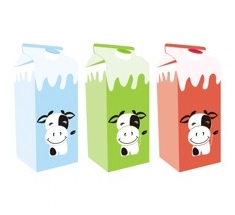
Study shows how to optimize recycling
By By Carol Neshevich
Food In Canada Packaging Sustainability recycling StudyTo mark Waste Reduction Week in Canada, the Carton Council of Canada spread the word about a new study on recycling optimization

To mark Waste Reduction Week in Canada, which took place Oct. 19 to 25, the Toronto-based Carton Council of Canada (CCC) was spreading the word about a new study on recycling optimization.
Five packaging industry groups in the U.S., including the American equivalent of the CCC, recently commissioned the study to find ways to optimize the recycling of their packaging after it goes into the bin. Called the MRF Material Flow Study, it specifically evaluated where packages end up in a sorting facility, why packages flow in certain ways, and what potential changes to the sorting processes could improve recycling of recyclable containers, including carton packaging for milk, juice, soup and other food and beverage products.
According to the CCC, even though this is a U.S. study, the results are applicable to Canadian sorting centres.
“This report is a step in the right direction for understanding how materials react as they pass through sorting centres. Not only could it lead to improvements in the handling of materials in sorting centres, but the data could also have an impact on packaging design,” says David Yousif, who is in charge of the recycling facility for the City of Hamilton, Ont.
“Although the study was conducted in the U.S., we have reached the same conclusions in Quebec. Our sorting centres operate with similar parameters and the material is the same,” adds Jean-Sebastien Daigle, vice-president of Operations at La Société VIA.
Canada is already in a good position in terms of collection with the majority of recyclable materials going into recycling bins, according to the CCC, but this study highlights the importance of every action along the recycling value chain.
For instance, size and shape have an impact on sorting. Items tend to move better along conveyer belts when they have a similar size and shape. For this reason, citizens participating in curbside recycling should not crush containers before putting them in the recycling bin. Cartons and other containers that keep their shape are more likely to end up in the right bale during sorting. Used cartons are a high-value commodity and can be resold at a higher price and used, for example, in the making of paper products and building materials.
The study showed that the separation step is critical as well. By promoting rigorous maintenance of equipment at sorting centres, managers ensure a better capture rate and minimize material loss. The study also confirmed that the use of optical sorters, where appropriate, help to identify material and are playing an increasing role in the sorting of recyclable materials.
To access the complete report for the MRF Material Flow Study, click here.
Print this page